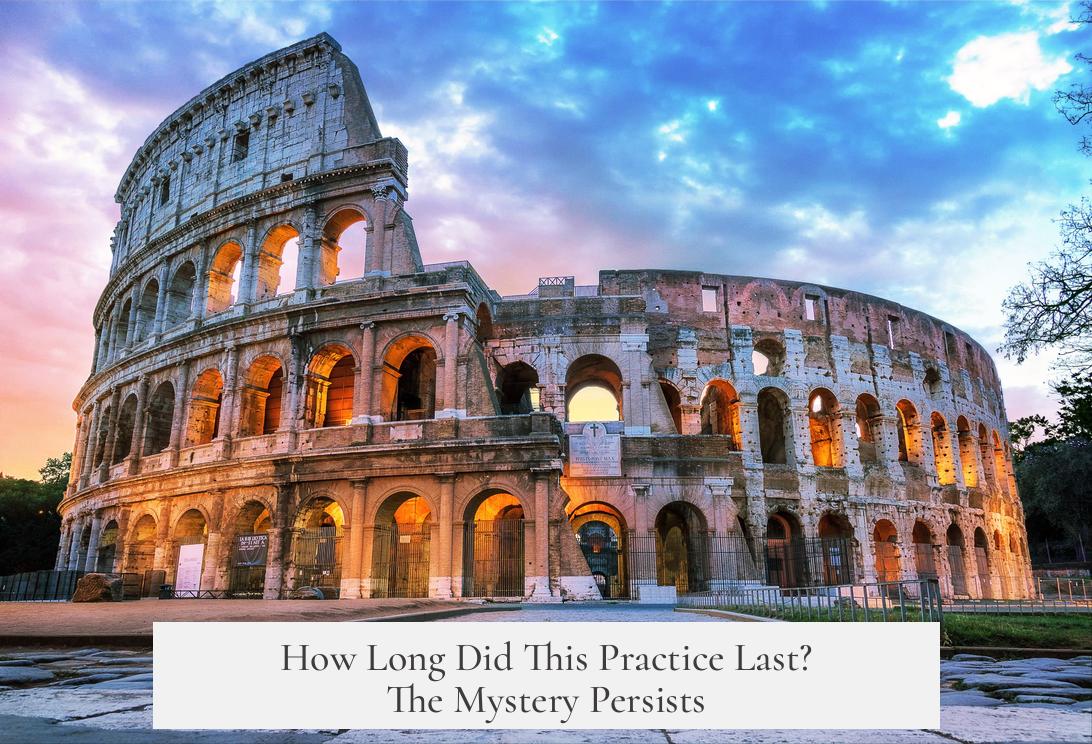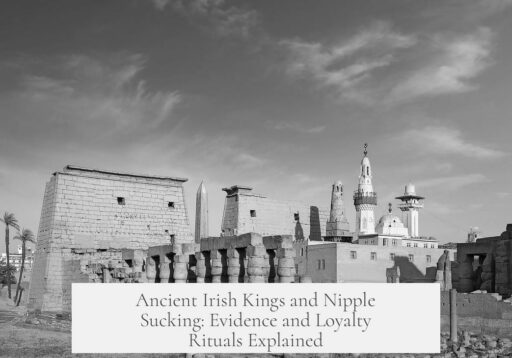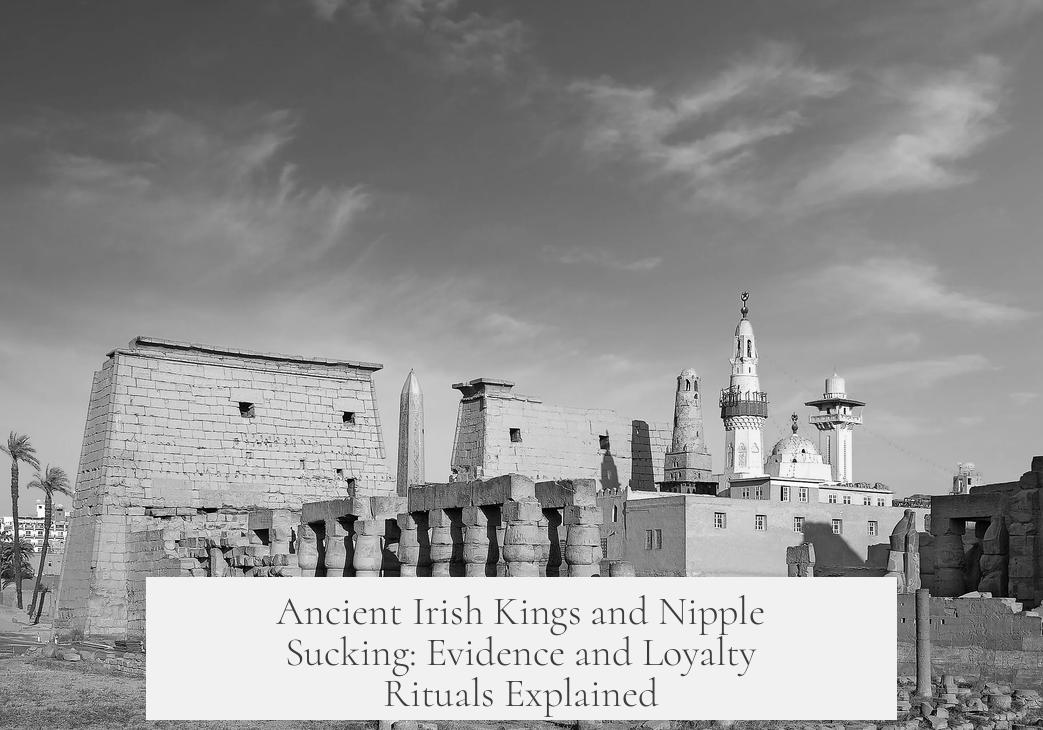There is some historical evidence suggesting that nipple sucking served as a symbolic act of loyalty or submission in ancient Ireland, but it remains limited and open to interpretation.
One primary source often cited is Saint Patrick’s *Confessio*, where he mentions that during his time in Ireland, sailors offered him passage on their boat but expected him to suck their nipples. Patrick refused this, describing it as a “barbarian custom” and saying he declined for “fear of God.” This anecdote suggests nipple sucking functioned as a ritual signifying fealty or allegiance.
The original Latin text’s precise meaning is subject to debate. Translations vary between “breast” and “nipple,” but the general consensus is that this intimate act symbolized submission or loyalty to a leader or protector. Unfortunately, no complete scholarly consensus exists about the accuracy of the translation or the extent of the practice.
There is no solid evidence detailing when or how this tradition ended, leaving its duration into early Christian or medieval Irish society unclear. Nor is there reliable information on related practices such as nipple severing, which some sources mention but lack substantial corroboration.
This practice appears unique compared to typical medieval loyalty rituals, which usually involved oaths or physical gestures like handshakes or kissing a ring. The nipple-sucking ritual might relate closely to clan or kinship ties, emphasizing the physical submission to a leader in a very palpable form.
- Saint Patrick’s *Confessio* offers the clearest reference to nipple sucking as a loyalty ritual in Ireland.
- The act symbolizes submission or fealty, interpreted from unclear Latin phrasing.
- It is unknown when or why this custom ended.
- Information on related practices such as nipple severing is scarce and unverified.
- The ritual stands out as an unusual form of pledging loyalty in ancient Ireland.
Overall, while Saint Patrick’s account supports the claim that nipple sucking was a sign of loyalty, the evidence is fragmentary. This leaves room for cautious interpretation but no definite historical narrative confirming how widespread or formalized the custom was in ancient Irish society.
Is There Actual Evidence that the Ancient Irish Sucked Their Kings’ Nipples to Display Fealty?

Simply put, yes—ancient Irish customs included a ritual symbolizing loyalty through nipple-sucking, according to some historical texts, but the practice is shrouded in mystery and ambiguity. Let’s peel back the layers of this bizarre and fascinating claim with evidence, context, and a pinch of humor, so you can see if this seemingly strange tradition holds water—or rather, breast milk.
First off, you might wonder, “Did the ancient Irish really suck their kings’ nipples to show loyalty?” It sounds like something you’d hear in a wild fantasy epic or a quirky pub tale, but there’s indeed a historical reference that touches on this very topic.
A Surprising Mention in Saint Patrick’s Confessio
The main piece of evidence comes from Saint Patrick himself. Yes, *that* Saint Patrick, who bravely went into pagan Ireland and tried to convert the locals to Christianity. In his famous Confessio—his autobiographical account—there’s a peculiar passage where Patrick mentions an offer from sailors to take him on a boat.
Sounds ordinary? Not quite. These sailors offered him passage on the condition that he sucked their nipples. Patrick declined, calling the practice a “barbarian custom” and saying he refused “for fear of God.”
This is fascinating because it hints at nipple-sucking symbolizing submission or loyalty. To Patrick, a Christian missionary, such a ritual was unclean and repulsive, which tells us that unusual rituals marked pagan practices back then.
What Does This Say About Loyalty Rituals?
This reference from Patrick’s Confessio suggests nipple-sucking may have been a way to pledge loyalty or submission within the ancient Irish social system—or among certain groups. But what kind of groups? Kings? Chieftains? Common sailors? The text isn’t crystal clear.
We do know that many ancient societies had unique ways to cement bonds. The Irish likely had their own, steeped in symbolism and rites of passage—this nipple-sucking ritual might be one such tradition.
Diving Into the Mysterious Translation
This all hinges on how we interpret the original Latin text describing this practice. The word translated as “nipple” might also be rendered as “breast,” which leads to some debate among historians and translators. Since I’m not fluent in Latin (who is, unless you’re a scholar or a time traveler?), it’s fair to say the exact translation remains a bit fuzzy.
Some experts argue that “breast” could be a better fit to capture a symbolic gesture instead of literal nipple-sucking. But even if that’s true, the essence remains: a physical ritual symbolizing allegiance or subservience existed.
How Long Did This Practice Last? The Mystery Persists

One of the biggest black holes in this story is when nipple-sucking as a loyalty ritual stopped being a thing. Seriously, who knows? The historical record doesn’t tell us when ancient Ireland phased out such customs.
The tradition probably faded as Christianity spread and reshaped social norms, making such rituals unacceptable or outdated. But there’s no neat timestamp on when this nipple-sucking rite went extinct.
About the Rumors of Nipple Severing
Now, let’s address a dark twist: some stories mention nipple severing in ancient Irish practices. But this idea is speculative at best. Sources lack concrete evidence, and the claim may stem from misinterpretations or exaggerations over time.
As of now, historians haven’t unlocked firm proof about nipple severing related to loyalty or kingship rituals. So keep that one on standby for now—like an urban legend waiting to be debunked or proven.
Why Would Nipple-Sucking Represent Loyalty?
It sounds unusual—why nipples? Well, rituals often use the body’s intimate parts to symbolize trust and connection. Think of it as a bizarre handshake or blood oath, ramped up to the next level of weird.
Historically, sharing bodily fluids or intimate contact symbolized forging a bond. Nipple-sucking might have been a physical act demonstrating submission to a leader’s authority, marking the loyal follower as part of the group.
It’s like saying, “I’m yours, boss,” but in a very tactile way.
Could This Ever Happen Today? Spoiler: Probably Not
Imagine trying to revive ancient nipple-sucking as a loyalty ritual at your office team-building exercise. It would be awkward—how do you even bring that up in HR meetings?
Practices like these are locked in the past for good reasons—modern sensibilities and social norms have moved on. But it’s fascinating to uncover such odd bits about ancient human behavior.
What Can We Learn From This Odd Chapter of History?

- Cultural Symbolism Matters: Even seemingly gross or bizarre acts can carry deep meaning in a culture’s social fabric.
- Language Can Confuse or Reveal: We rely heavily on translations of ancient texts, which may muddy—or clarify—the true meaning of rituals.
- History Has Gaps: Some traditions leave faint traces; nipple-sucking rituals ended up as cryptic footnotes, showing the limits of historical knowledge.
- Human Connections Are Weirder Than Fiction: If humans hadn’t invented strange customs, history would be a lot less colorful—and a lot less entertaining.
Wrapping It Up
So, is there actual evidence of the ancient Irish sucking their kings’ nipples to show fealty? Yes, but it’s mostly known from one intriguing but ambiguous reference by Saint Patrick. The custom likely symbolized loyalty or submission, but historical details are vague. We don’t know how widespread or long-lasting the practice was. And rumors of nipple severing remain unsubstantiated.
Whatever the truth, this tale gives us a peek at how cultures develop unique ways of showing allegiance. It’s proof that loyalty rituals don’t always follow logic or modern taste.
So next time you hear someone spin a yarn about ancient nipple-sucking rituals, you’ll know it’s more than just a bizarre myth—it’s a real, if puzzling, snippet of Irish history.




